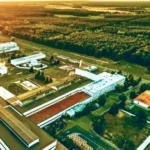– The programme for the hard coal mining sector in Poland by 2030 declares actions to radically remedy the situation of the sector, but does not propose radical solutions. Local government elections are approaching – writes Wojciech Jakóbik, editor-in-chief of BiznesAlert.pl.
Closure against payment
The Polish Press Agency informs that in 2018, public aid is planned for the industry with a total value exceeding PLN 2.6 billion, of which nearly PLN 1.2 billion is the cost of reducing production capacity, and about PLN 1.1 billion is the cost of employee claims, mainly mining leave. The European Commission agreed to this assistance by notifying the Polish mining programme in 2016. At the same time, it is worth bearing in mind that the Commission only notifies state aid which does not involve investment in new mines. It is clear, therefore, that the government’s viewpoint in Brussels has found understanding and it does not want strikes in Warsaw either.
According to the Polish Press Agency, the records of the programme show that last year the mining industry used less than PLN 1.5 billion of the budget subsidy; a similar amount (PLN 1 billion 445.5 million) was planned in the budget for 2018 – over PLN 833.5 million of this amount were the costs of reducing production capacity (including physical liquidation of mining assets in the Mine Restructuring Company), and over PLN 400 million were the costs of employee claims, including protection.
It is therefore about closing the mines without strikes. Part of the money is used to liquidate unused mines and part to calm the miners, including through a voluntary departure programme. It is a soft reform of the mining industry which costs us PLN 1.5 billion a year. The profit is the cooperation of trade unions and the expense is a significant budgetary burden. Perhaps less submission to unions could save money, but it would be more revenge on decision-makers in local government elections. The ruling group is already preparing a positive offer as part of the Silesian Programme, about which I have already written in BiznesAlert.pl.
Investments with new tools
At the same time, Poles want to invest in modern mining in order to increase the safety and efficiency of work. This should result in a decrease in employment, labour costs, production costs, and thus an increase in the competitiveness of Polish coal „by adjusting production capacity to market needs and export opportunities.”
The forecast of the Polish demand for hard coal in 2030, included in the Programme, assumes in the so-called reference scenario consumption similar to the current one, in the order of 70-71 million tonnes per annum (including 57-58 million tonnes of thermal coal and 13 million tonnes of coke). In the low scenario, with abandoned development works in this sector, the annual minimum demand was estimated at 56.5 million tonnes, and in the development scenario even at 86.1 million tonnes in 2030. In order to fight for the Polish mining market, the mining industry is to manage resources through a Dynamic Price Parity Map, which will show the difference between the price of coal from Poland and imported one, as well as the Sectoral Dynamic Resource Base, which will show the availability of raw material of a given class near the emerging demand.
In order to facilitate investment in modern mining, the government analyses the integration of mining and energy in two Groups of Coal Producers: Upper Silesian (based on PGG) and Eastern (based on LW Bogdanka). The document also heralds „further consolidation” in the power industry.
Programmes and reality
The government declared in the Programme for Silesia that it was ready to invest in the construction and reconstruction of thermal coal mines for PLN 5 billion by 2019. The programme also provides for the transformation of post-mining areas, which is supported by the European Commission. We do not know what is the relation between the Programme for Silesia and the hard mining sector. If their integration takes place, which would be easier after Mateusz Morawiecki, the author of the Responsible Development Strategy, became Prime Minister, one should expect a slow transformation accompanied with lavish social protection and investments. If the plan is successful, Polish mining will survive the next decades. If not, we will waste a lot of money.








